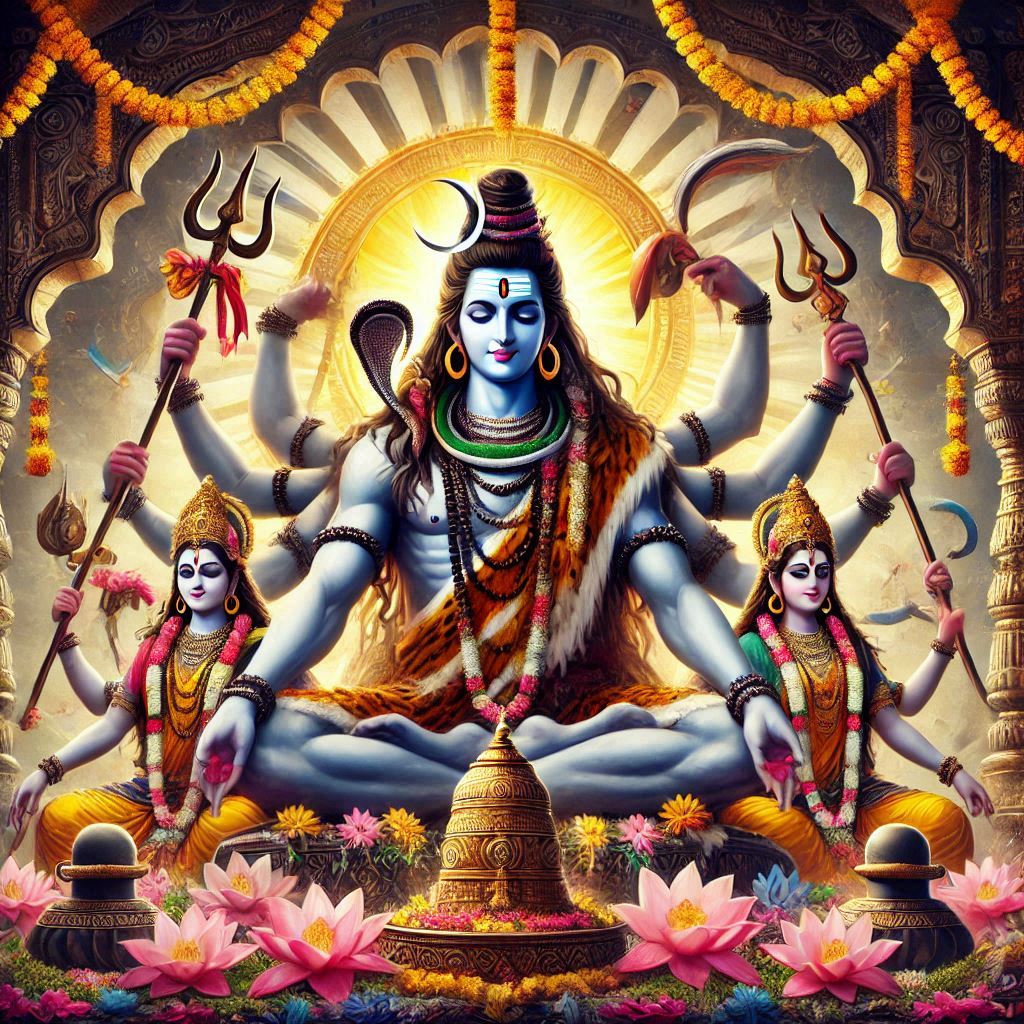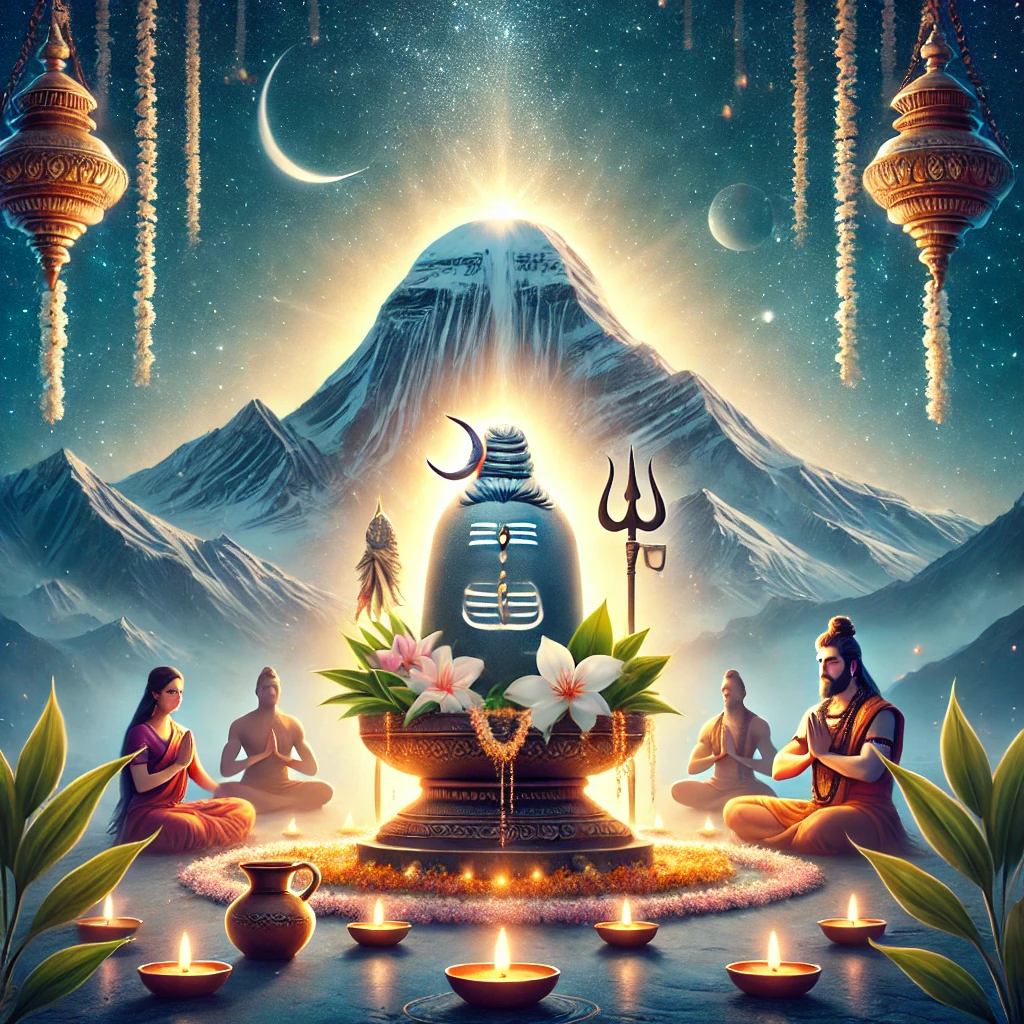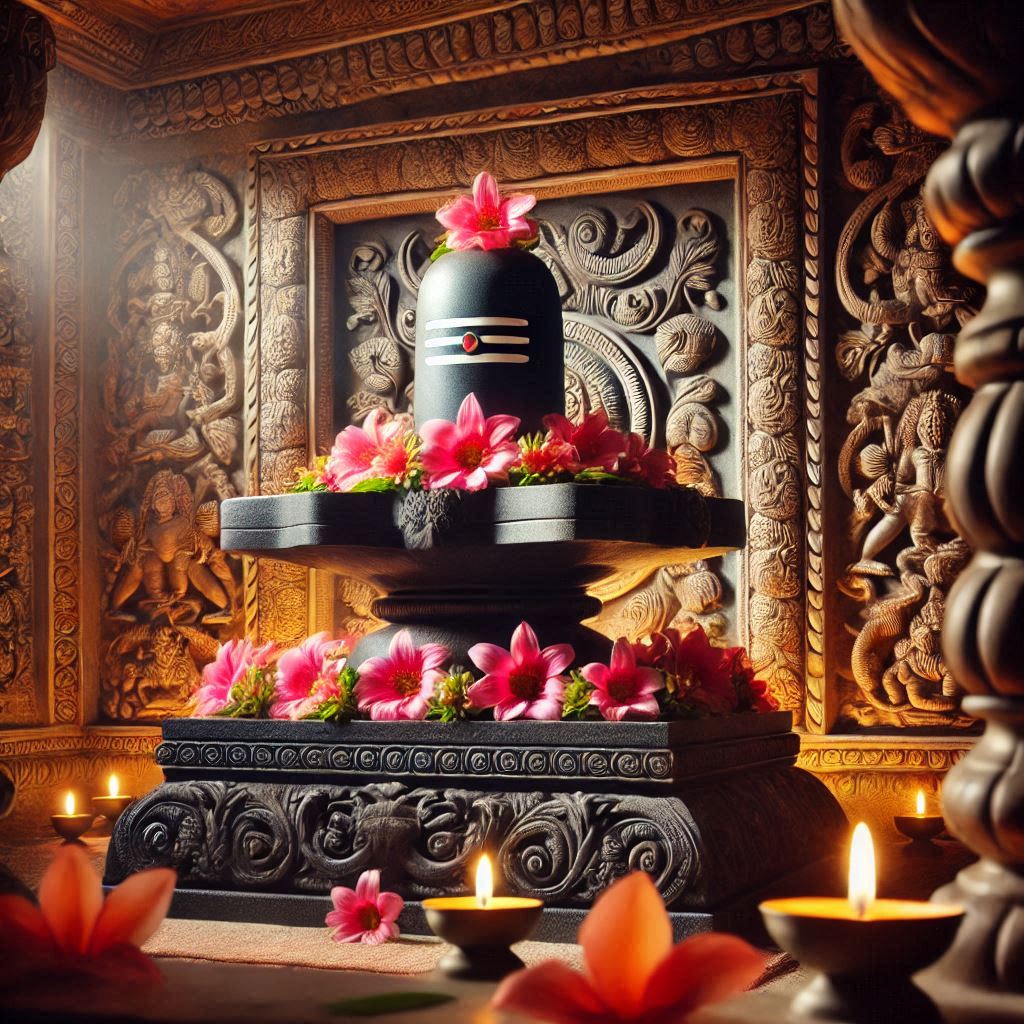Maha Shivratri 2025 : Important dates and Timings
Introduction
Translating as “The Great Night of Shiva,” Maha Shivratri is a major Hindu celebration honoring Lord Shiva, the god representing destruction and rebirth.Maha Shivratri falls on Wednesday, February 26 in 2025.Observed with great dedication throughout India and other countries, this lucky event marks a night of spiritual enlightenment and inner introspection.
Significance of Maha Shivratri
For a number of reasons, Maha Shivratri is considered to be of utmost significance in the Hindu religion.
- Divine Union: Mana Shivratri has immens.It honors Lord Shiva’s marriage to Goddess Parvati, therefore signifying the meeting of masculine and feminine powers.Its relevance in Hinduism for numerous purposes:𝐆
- Spiritual Awakening: Devotees say that really observing this night releases previous misdeeds and opens the path for moksha (salvation).
- Cosmic Dance: Legend holds that on this night Lord Shiva executed the Tandava, the cosmic dance of creation, preservation, and annihilation.
Date and Puja Timings for Maha Shivratri 2025
For those watching the ceremonies, optimal spiritual benefits depend on exact timings.
- Chaturdashi Tithi Begins: February 26, 2025, at 11:08 AM
- Chaturdashi Tithi Ends: February 27, 2025, at 8:54 AM
- Nishita Kaal Puja Time: February 27, 2025, from 12:15 AM to 1:04 AM
- Ratri First Prahar Puja Time: February 26, 2025, from 6:19 PM to 9:26 PM
- Ratri Second Prahar Puja Time: February 26, 2025, from 9:26 PM to 12:32 AM (February 27)
- Ratri Third Prahar Puja Time: February 27, 2025, from 12:32 AM to 3:39 AM
- Ratri Fourth Prahar Puja Time: February 27, 2025, from 3:39 AM to 6:45 AM
- Shivratri Parana Time (Breaking the Fast): February 27, 2025, from 6:45 AM to 8:54 AM
Preparations for Maha Shivratri
Observing Maha Shivratri involves meticulous preparations to ensure a spiritually fulfilling experience.
- Purification
- Morning Ritual: Begin the day with a purifying bath before sunrise, symbolizing the cleansing of the body and mind.
- Attire: Wear clean, preferably white or light-colored clothes, representing purity and devotion.
- Sanctifying the Puja Area
- Selection of Space: Choose a clean and serene area in your home or visit a nearby Shiva temple.
- Altar Setup: Place a Shiva Lingam or an idol of Lord Shiva on a decorated platform. Adorn the area with fresh flowers, especially white and red, and light oil lamps to create a divine ambiance.
- Gathering Puja Samagri (Materials) Ensure you have the following items for the puja:
- Shiva Lingam or Idol: The central focus of worship.
- Gangajal (Holy Water): For purification and Abhishekam (ritual bathing).
- Panchamrit: A sacred mixture of milk, yogurt, honey, ghee, and sugar.
- Bilva Leaves (Bel Patra): Considered highly auspicious for Lord Shiva.
- Sandalwood Paste: For applying tilak on the deity.
- Incense Sticks and Lamps: To purify the environment.
- Fruits and Sweets: As offerings to the deity.
- Vibhuti (Sacred Ash): To apply on the forehead, symbolizing purity.
Performing the Maha Shivratri Puja
The puja is traditionally conducted during the night, divided into four quarters, each with specific rituals.
First Quarter (6:19 PM to 9:26 PM)
- Abhishekam: Bathe the Shiva Lingam with Gangajal, followed by Panchamrit, and then again with water. This ritual signifies the purification of the soul.
- Offering Bilva Leaves: Place fresh Bilva leaves on the Lingam while chanting “Om Namah Shivaya.”
- Lighting Lamps and Incense: Illuminate the surroundings with oil lamps and incense sticks to invoke divine presence.
Second Quarter (9:26 PM to 12:32 AM)
- Chanting Mantras: Recite the Maha Mrityunjaya Mantra and other Shiva stotras with devotion.
- Offering Fruits and Sweets: Present seasonal fruits and homemade sweets to the deity as a token of gratitude.
- Meditation: Engage in silent meditation, focusing on Lord Shiva’s attributes, and fostering inner peace.
Third Quarter (12:32 AM to 3:39 AM)
- Applying Sandalwood Paste: Adorn the Lingam with sandalwood paste, symbolizing purity and devotion.
- Recitation of Shiva Chalisa: Sing or read the Shiva Chalisa to praise the Lord and seek his blessings.
Fourth Quarter (3:39 AM to 6:45 AM)
- Concluding Abhishekam: Perform a final Abhishekam for the Shiva Lingam with pure water. This act symbolizes the culmination of all spiritual practices.
- Offering Flowers: Place fresh flowers, such as white lotuses or jasmine, on the Shiva Lingam as a mark of devotion.
- Aarti: Conclude the puja with aarti, singing praises of Lord Shiva while waving a lit diya (oil lamp) in a circular motion.
Significance of Fasting on Maha Shivratri
Fasting is an integral part of Maha Shivratri observances. Devotees fast to purify their minds and bodies and enhance spiritual connection.
- Types of Fasting:
- Nirjala Fast: Abstaining from both food and water.
- Phalahar Fast: Consuming fruits, milk, and other sattvic items.
- Dos for Fasting:
- Begin the day with a sankalp (vow) to dedicate your fast to Lord Shiva.
- Consume sattvic food and drink water infused with tulsi leaves.
- Spend time in meditation, chanting, or reading scriptures.
- Don’ts for Fasting:
- Avoid consuming grains, pulses, or tamasic foods like onions and garlic.
- Refrain from indulging in worldly distractions or negative thoughts.
Myths and Legends of Maha Shivratri
Several fascinating stories are associated with Maha Shivratri:
- Samudra Manthan (Churning of the Ocean): Lord Shiva consumed the poison (halahala) that emerged during the churning of the ocean to save the universe. This act of selflessness is commemorated on Maha Shivratri.
- The Infinite Pillar of Light: According to legend, Lord Shiva appeared as a colossal column of light, challenging Lord Vishnu and Lord Brahma to find its beginning and end. This represents his infinite and formless nature.
- Union with Parvati: Maha Shivratri celebrates the divine wedding of Lord Shiva and Goddess Parvati, signifying the union of energy and consciousness.
Spiritual Practices to Enhance Your Maha Shivratri Experience
Maha Shivratri offers an opportunity for deep spiritual transformation. Consider incorporating these practices:
- Meditation: Engage in focused meditation, visualizing Lord Shiva’s form or chanting “Om Namah Shivaya.”
- Yoga: Practice yoga postures like Shavasana (corpse pose) and Padmasana (lotus pose) to enhance your spiritual energy.
- Reading Scriptures: Read sacred texts like the Shiva Purana or the Bhagavad Gita for inspiration.
- Community Service: Distribute food, clothes, or donations to the needy to embody Lord Shiva’s compassion.
Conclusion: Embrace the Blessings of Maha Shivratri
Maha Shivratri is a night of intense spiritual awakening not only a celebration. Observing this holy event with dedication, meditation, and fasting can help you to match Lord Shiva’s divine energy.
As you honor Maha Shivratri on Wednesday, February 26, 2025, may the grace of Lord Shiva clear your mind, remove roadblocks from your path, and guide you toward spiritual awakening. Namah Shivaya, Om!
FAQs About Maha Shivratri
1. What is Maha Shivratri, and why is it celebrated?
Maha Shivratri, meaning “The Great Night of Shiva,” is a Hindu festival dedicated to Lord Shiva. It is celebrated to honor his divine marriage to Goddess Parvati, his cosmic dance (Tandava), and his infinite nature.
2. When is Maha Shivratri 2025?
Maha Shivratri 2025 falls on Wednesday, February 26.
3. What are the puja timings for Maha Shivratri 2025?
The Nishita Kaal Puja, considered the most auspicious time, is from 12:15 AM to 1:04 AM on February 27, 2025. The Chaturdashi Tithi begins on February 26 at 11:08 AM and ends on February 27 at 8:54 AM.
4. What rituals are performed on Maha Shivratri?
The key rituals include:
- Abhishekam (ritual bathing) of the Shiva Lingam.
- Offering Bilva leaves, flowers, fruits, and sweets.
- Chanting “Om Namah Shivaya” and other Shiva mantras.
- Performing aarti during each quarter of the night.
5. What is the significance of fasting on Maha Shivratri?
Fasting purifies the body and mind, enhances focus, and deepens one’s devotion. It is believed to bring blessings from Lord Shiva and helps in spiritual growth.
6. Can children and elderly people observe the Maha Shivratri fast?
Yes, children and elderly individuals can observe a simplified version of the fast by consuming sattvic food and milk. It is essential to prioritize health and consult a doctor if necessary.
7. What is the importance of staying awake all night on Maha Shivratri?
Staying awake, known as jagarana, symbolizes vigilance and awareness. It reflects the devotee’s dedication and helps in overcoming ignorance, aligning with Lord Shiva’s energy.
8. Can I celebrate Maha Shivratri at home?
Yes, you can perform the puja at home by setting up an altar with a Shiva Lingam, following the rituals, and observing the night vigil with prayers and meditation.
9. Are there any specific foods allowed during the Maha Shivratri fast?
Yes, you can consume sattvic foods such as fruits, milk, nuts, and root vegetables like potatoes. Avoid grains, pulses, and tamasic foods.
10. What are the benefits of celebrating Maha Shivratri?
Observing Maha Shivratri helps in:
- Attaining inner peace and spiritual growth.
- Receiving blessings for health, prosperity, and success.
- Strengthening devotion and deepening one’s connection with Lord Shiva.
Maha Shivratri is a divine opportunity to renew your faith, embrace positivity, and seek the infinite blessings of Lord Shiva. Celebrate it with devotion and enthusiasm, and let the divine light guide you toward a fulfilling life. Om Namah Shivaya!


